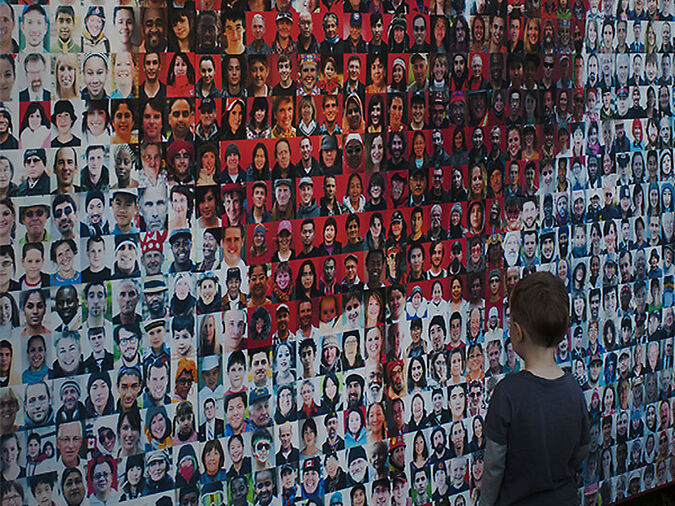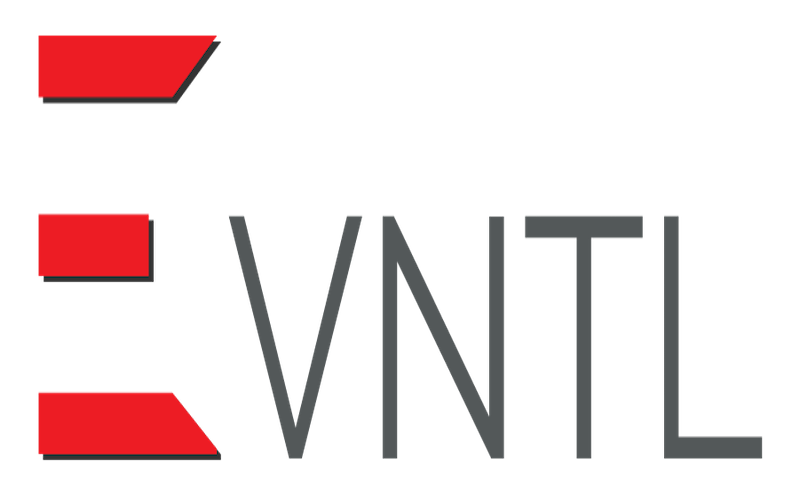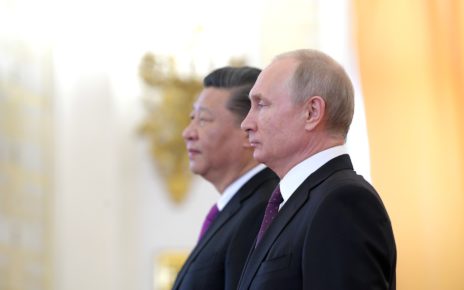Misinformation, disinformation, and malinformation (MDM) have long shaped public understanding and state policy, particularly when it comes to racialized and immigrant communities. For Asian Canadians, these false narratives are not a new phenomenon—they are deeply rooted in a colonial framework that defined Asia and its peoples through a lens of Orientalism. Coined by scholar Edward Said, Orientalism refers to the West’s distorted portrayal of Asia as exotic, inferior, and threatening—an idea that laid the groundwork for both cultural misrepresentation and systemic exclusion. These colonial-era distortions evolved into modern-day forms of misinformation, painting Asian Canadians as perpetual foreigners, economic threats, or model minorities, often depending on political need. Whether it’s anti-Chinese rhetoric during COVID-19 or disinformation about Indian international students “stealing” jobs, Orientalist tropes continue to shape how Asian Canadians are seen—and treated—in public discourse and policy.
The Colonial Construction of the Orient and the Historical Foundations of MDM
Perceptions of Asian-Canadians were used to justified discriminatory policies, such as the 1885 Chinese Head Tax, the internment of Japanese Canadians during World War II, and the Continuous Journey Regulation of 1908, which effectively barred Indian and Japanese immigration by requiring migrants to arrive directly from their country of origin—a near impossibility for those traveling from British India and Japan.
Asian Canadians have historically been viewed through a limited set of stereotypes. These tropes are not merely cultural misunderstandings but serve political and ideological functions, often reinforcing racial hierarchies and exclusionary policies. For instance, in the early 20th century, anti-Asian labor rhetoric fueled exclusionary laws such as the 1923 Chinese Exclusion Act, barring Chinese immigration to Canada for over two decades. Similarly, disinformation about Japanese Canadians during World War II led to their mass internment, despite a lack of evidence of espionage or disloyalty. By understanding these deep-rooted biases and their colonial origins, we can better contextualize present-day MDM and develop effective strategies to counteract it—not only in Canada but across other NATO member states with similar colonial legacies and immigration histories.
MDM in Contemporary Canada: From Pandemic Panic to Policy Influence
Today, MDM about Asian Canadians manifests in multifaceted ways with severe social and political consequences. The COVID-19 pandemic starkly illuminated how disinformation can rapidly escalate into widespread discrimination. Early in the pandemic, narratives spread across mainstream and social media blaming China and, by extension, Chinese communities globally, for the virus’s emergence and transmission. This rhetoric was echoed by political leaders and media outlets in the Global North, with phrases like the “China virus” and “Wuhan flu” entering public discourse. These narratives laid the groundwork for a dramatic surge in anti-Asian hate across Canada.
A case study in Vancouver highlights the deep harm caused by pandemic-era MDM. In 2020, the Vancouver Police Department reported that anti-Asian hate crimes had increased by over 700% compared to the previous year, a figure that reflected not only a statistical spike but a daily lived reality of fear, exclusion, and violence for Chinese Canadians. Incidents ranged from verbal harassment to violent assaults, with many victims being elderly individuals targeted while performing mundane tasks like grocery shopping or walking in their neighborhoods. Misinformation online often connected these attacks to unfounded theories of biological warfare or exaggerated claims about cultural eating practices—echoes of Orientalist tropes that have long painted Asian cultures as “other” or dangerous. The Chinese Canadian National Council documented more than 900 incidents in 2021 alone, marking a 47% increase from 2020, with East and Southeast Asian communities reporting the most cases. These narratives were not only inaccurate but deeply racialized, illustrating how global disinformation can reinforce historic domestic biases, activating old stereotypes under new circumstances.
Beyond health-related disinformation, immigration debates remain a critical arena for MDM’s impact, particularly in how they influence public opinion and policy targeting South Asian communities. One of the most persistent narratives has been the portrayal of Indian international students as a threat to Canadian job markets and public services. This rhetoric gained traction in both political commentary and online discourse, especially amid rising concerns about housing shortages and labor competition. However, such claims ignore the broader economic context: international students contribute billions annually to the Canadian economy, not just through tuition and living expenses but by filling vital roles in service and care sectors, often under precarious labor conditions.
A compelling example of policy-influenced disinformation can be seen in the debates surrounding the Post-Graduation Work Permit program and permanent residency pathways for Indian students. While critics argued that these programs created an unfair advantage for foreigners, data consistently shows that Canada relies on international talent to meet labor market demands, particularly in technology, healthcare, and education. Despite this, Indian students—who make up the largest demographic of international learners in Canada—have been targeted with xenophobic messaging on social media and in political forums. Viral tweets and fringe media platforms have claimed they “steal jobs“, a narrative that lacks substantiation but resonates with anxieties stoked by MDM. In turn, these misperceptions have pressured policymakers to introduce more restrictive immigration caps, despite evidence showing such policies could harm Canada’s long-term economic resilience and innovation ecosystem.
The real-life consequences of such disinformation are reflected in rising hate crime statistics. In 2023, police services across Canada recorded 4,777 hate crime incidents, marking a 32% increase from 3,612 in 2022. Specifically, hate crimes targeting South Asian populations have risen steadily for three consecutive years, increasing 143% from 2019 to 2022, including an 18% rise between 2021 and 2022. These figures are more than just numbers—they reveal the structural vulnerability created by persistent MDM, which translates biased narratives into tangible violence and discrimination.
Social media remains the primary amplifier of these harmful narratives, creating algorithmically reinforced echo chambers where disinformation spreads with little oversight. The platforms’ prioritization of sensationalist content means that misleading headlines often go viral faster than factual corrections. In this environment, fear and mistrust thrive, stoking racial tensions and shaping public opinion in ways that directly influence policy making. Whether it is a baseless claim about virus transmission or a false narrative about economic competition, the spread of MDM has become a mechanism by which Asian Canadian communities are marginalized, scapegoated, and silenced.
Resistance and Advocacy: Reclaiming Narratives Through Media and Policy
Despite the challenges posed by MDM, Asian Canadians have actively resisted attempts to silence or distort their stories. Independent media platforms, such as The Juggernaut, offer alternative narratives that challenge mainstream biases. Grassroots organizations like project 1907 work to counteract MDM by documenting hate crimes and advocating for policy changes. Digital activism has also become a powerful tool for combating MDM. Social media campaigns, fact-checking initiatives, and community-led discussions help correct false narratives in real time. The rise of platforms like Cold Tea Collective and New Canadian Media has provided spaces for nuanced storytelling, where Asian Canadians can share their lived experiences without distortion.
Additionally, legal advocacy groups, such as the Chinese Canadian National Council for Social Justice, actively challenge discriminatory policies and misinformation-fueled racism through litigation and public education campaigns. Community-driven educational initiatives have also played a crucial role. Programs that incorporate Asian Canadian history into school curricula help dismantle persistent stereotypes and misinformation. Organizations such as the Vancouver Asian Film Festival use storytelling and media representation to push back against one-dimensional portrayals of Asian communities, fostering a more accurate and empathetic understanding of their experiences. As MDM continues to evolve, so must the strategies to counteract it. By leveraging education, advocacy, and digital media, Asian Canadians are reclaiming their narratives and resisting MDM-driven discrimination.
The Global Dimension: NATO and the Weaponization of MDM
The fight against MDM, particularly its impact on racialized communities like Asian Canadians, also intersects with global security concerns. NATO, as an international alliance, has recognized the growing threat posed by MDM in the context of hybrid warfare—where false narratives are weaponized to destabilize governments, manipulate public opinion, and undermine democratic institutions. NATO’s Strategic Communications Centre of Excellence works to combat disinformation and analyze its role in shaping geopolitical conflicts. The fight against MDM, particularly its impact on racialized communities like Asian Canadians, intersects with broader international security concerns. Within NATO, misinformation is increasingly recognized not only as a challenge to democratic discourse but as a tool of hybrid warfare. In this context, MDM becomes a strategic weapon—used to destabilize societies from within by amplifying existing social fissures, including racial tensions, xenophobia, and colonial legacies.
This weaponization of MDM is not confined to theoretical models. In both the United States and France, for instance, MDM has been deployed to manipulate narratives around immigration and public safety, often by framing racialized groups as threats to national identity or economic stability. During the 2016 U.S. presidential election, disinformation targeted Black Lives Matter activists and Asian American communities with divisive content, while simultaneously amplifying xenophobic tropes in predominantly white forums. Similarly, in France, far-right disinformation campaigns have fueled anti-Muslim and anti-Asian sentiment by spreading false narratives about crime, cultural incompatibility, and alleged state favoritism toward immigrants—strategies that reinforce long-standing Orientalist myths.
Canada remains vulnerable because of its multicultural society and close geopolitical alignment with NATO allies. Foreign disinformation campaigns have increasingly sought to exploit domestic issues like immigration caps, housing shortages, and pandemic responses—topics already charged with racialized narratives. In some cases, false claims about Chinese or Indian interference in Canadian universities or political systems are amplified by state-aligned media outlets abroad, creating a feedback loop in which domestic anxieties are echoed and validated by seemingly external sources. These narratives not only contribute to a hostile environment for Asian Canadians but also frame them as pawns or agents of foreign powers, reviving Cold War-era suspicions and undermining democratic participation.
The global dimension of MDM thus reinforces the importance of transnational responses. NATO’s approach offers a model for how member states can coordinate efforts to detect, counter, and build resilience against disinformation campaigns that cross borders and digital platforms. More importantly, it provides a space to integrate an anti-racist lens into security policy—acknowledging that the harms of MDM are disproportionately borne by racialized communities. Collaborative frameworks like the European Centre of Excellence for Countering Hybrid Threats, based in Finland, are beginning to examine how social cohesion and minority inclusion intersect with national security—offering a promising direction for countries like Canada to follow. In this light, Canada’s experience should not be viewed in isolation but as part of a wider struggle against ideologically driven MDM across NATO nations. Understanding how these narratives are recycled and repurposed globally—whether targeting Asian Canadians, Muslim French citizens, or African American communities in the U.S.—reveals the structural nature of the threat. Only by embedding anti-racist strategies within both domestic and international information security policies can states begin to truly address the weaponized nature of disinformation in today’s world.
MDM is not a new challenge, nor is it limited to the digital age. It has deep historical roots, particularly in the legacy of Orientalism that continues to shape the perception and treatment of Asian communities in Canada and beyond. While misinformation has evolved with technology, its core function remains the same: to marginalize, divide, and exert control. In Canada, colonial narratives resurface through modern disinformation, reinforcing harmful stereotypes and fostering social exclusion for Asian Canadians. Addressing this issue requires both national advocacy and international cooperation. Community-led efforts to reclaim narratives, educate the public, and promote accurate representation are essential, but they must be bolstered by broader strategies such as those led by NATO and other transnational actors.
Looking forward, it is crucial to anticipate how MDM will evolve and the new challenges it may pose to Asian communities. The increasing use of AI-generated content, deep fakes, and hyper-personalized propaganda threatens to deepen cultural stereotypes and further erode trust in institutions. As geopolitical tensions rise, diaspora communities may become scapegoats—framed as foreign agents or security threats—reviving Cold War-era suspicions in new, digitally mediated forms. These trends risk undermining democratic participation and social cohesion. Therefore, the fight against MDM must include proactive, anti-racist strategies embedded within both domestic and international policy frameworks. By understanding the historical roots, current dynamics, and future risks of MDM, we can work toward a more equitable and informed public discourse—one that not only resists falsehoods but dismantles the systems that allow them to thrive.
Any views or opinions expressed in articles are solely those of the authors and do not necessarily represent the views of the NATO Association of Canada.
Canadian Mosaic Wall (2013) via Wikimedia Commons Licensed under CC BY-SA 4.0





